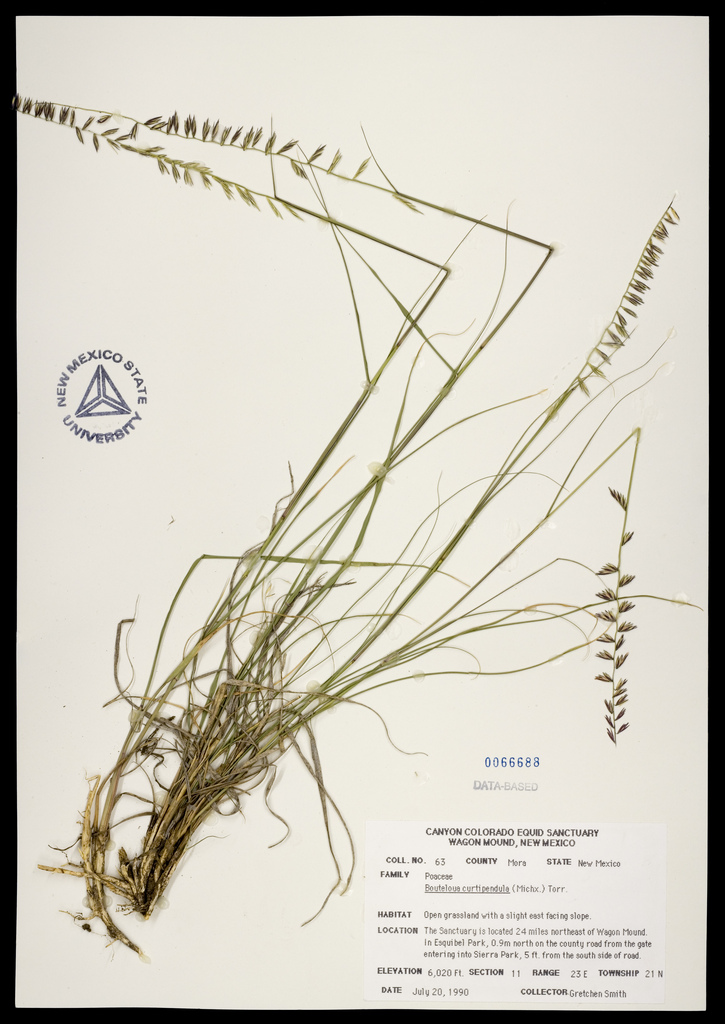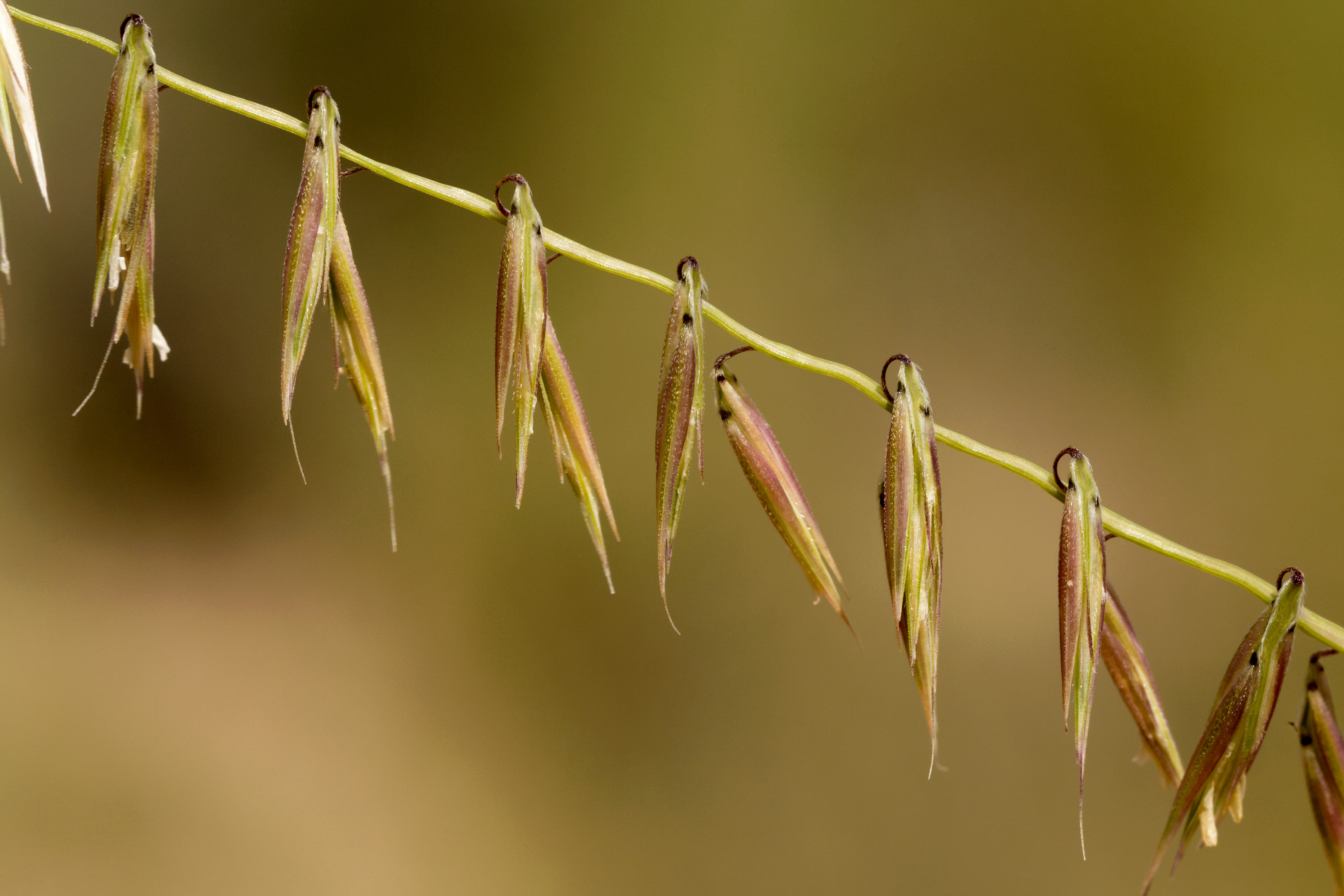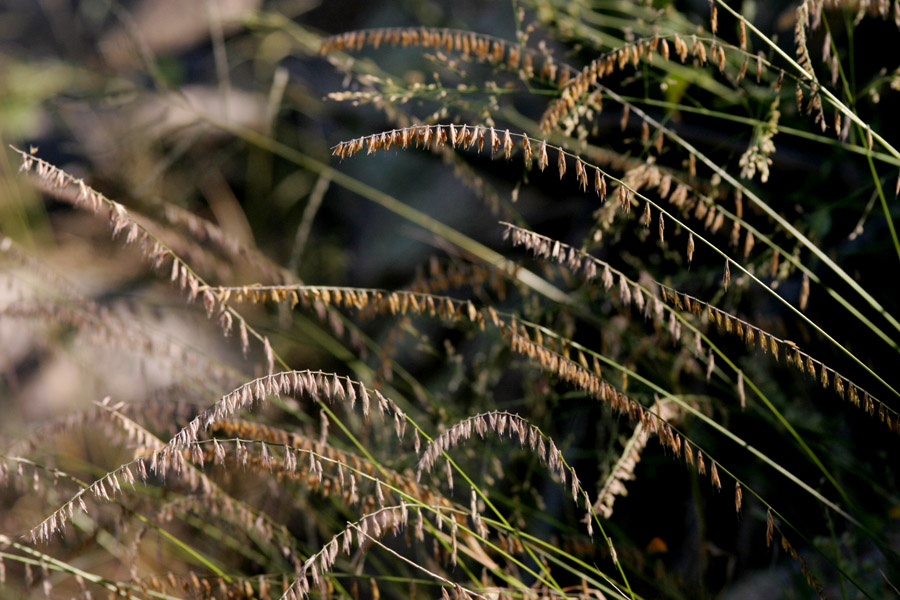Selected Plants of Navajo Rangelands
Grama, sideoats

Sideoats grama is a medium-size perennial bunchgrass, 15 to 30 inches tall or occasionally taller. This is the largest and most coarse of the grama grasses. It has a blue-green color, sometimes with a purplish cast (especially in the spring), and cures to a reddish brown or straw color. Leaves are coarser than other species of gramas, straight, comparatively stiff, and mostly basal. Ten to thirty small, non-comb-like spikes are borne mostly along one side of each central seed stalk. These spikes drop when mature, leaving a long zigzag stalk. It produces high quality, nutritious forage that is relished by all classes of livestock throughout the summer and fall, and it remains moderately palatable into winter. This makes it one of the most important range grass species.
Sideoats is moderately drought tolerant, but less so than blue grama. It is moderately tolerant of semi-shaded conditions and can be found in open woodlands. It is fairly tolerant of fire (when in a dormant state) and of spring flooding. It probably has the widest range of adaptation of any of the warm-season perennial grass plants.




©2018 NMSU Board of Regents.
Individual photographers retain all rights to their images.
Partially funded by the
Western Sustainable
Agriculture Research and Education Program
(westernsare.org; 435.797.2257),
project EW15-023.
Programs and projects supported by Western SARE are
equally open to all people.